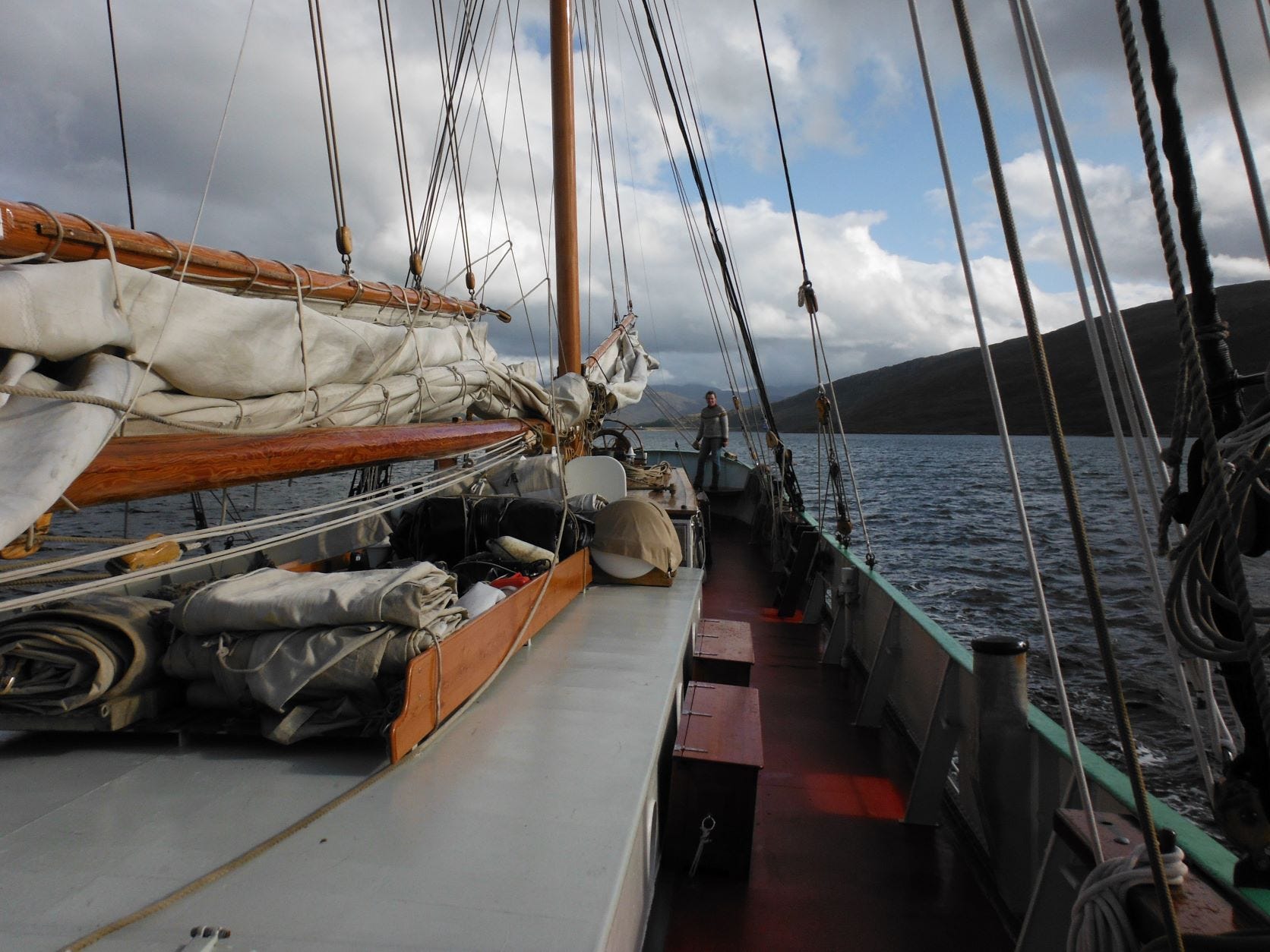

The tall ship, Tecla, a Dutch North Sea sailing herring dragger built in 1915, was tied by three heavy hawser lines to the ferry quay in Ullapool, Northwest Scotland, a town of white-washed buildings packed together for the herring fishery. Most of us had arrived the evening before and we were ready to sail except for obtaining one more official document. The health certificate is not very important to European nations but is required to land in Argentina, Chile, and other ports along the voyage around the Americas. Next year, Tecla was scheduled to return to the Atlantic over the top by way of the Northwest Passage.
The health inspector arrived from Inverness early in the afternoon. After inspecting every room, he issued the certificate. The Harbormaster in bright yellow storm jacket stood on the pier. He called us “lucky bastards” to be sailing to the Canary Islands in September. Our female captain gave the Harbormaster a hug and climbed down the iron latter. She started up the big diesel engine, radioed for assistance with the docking lines, and waited by the big wooden steering wheel. On deck the first mate, a man in his thirties, stood midship by the spring line. There were two mates in their twenties, a woman in the front by the bow line and a man in the back by the stern line.
Two men in blue jump suits and high rubber boots walked out the pier. They let go the stern and bow lines. The captain throttled up the engine to pivot on the spring line away from the pier. Spring line was cast off, hauled into the boat, and fenders pulled in. We were on our way across the ocean to Tenerife.

To set the four lower sails on Tecla, we began with hoisting the largest sail, the main sail. Two hefty wooden spars embrace the tall wooden mast. The spar at the bottom of the sail is the boom. The spar on top that holds up and out the sail is called the gaft. Two rope lines (halyards) are pulled to raise the main sail. One halyard is attached to the throat of the gaft where it meets the…
